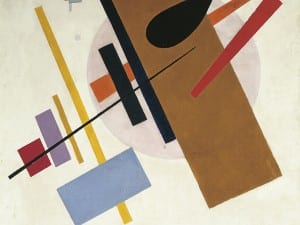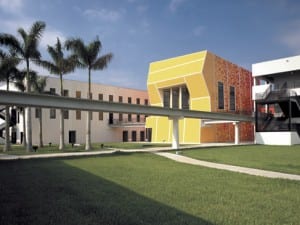For The Spike Island Tapes at Alan Cristea Gallery, London, Richard Long has created his largest and boldest collection of print works to date. This is Long’s first solo exhibition at the gallery, and sees heavy experimentation with carborundum; a material that Long is using for the first time by means of smearing it hands to produces gestural marks. Carborundum is a compound of silicon and carbon that is normally used as an abrasive to produce very hard ceramics.
Long dilutes carborundum down to a paste and drags and wipes it with his hand across aluminium plates. He also experiments with letting gravity allow the paste to cascade down plates in a dripping fashion. This is most apt in Mississippi River Blues (2014), a four-panelled work that extends its southern drawl across an entire wall of the gallery. The horizontal black panels are dazzled by a network of discoloured white carborundum. The title of the work, a song written by Big Bill Broonzy in 1934, describes the protagonist’s struggle to find a way to get across the Mississippi river to see the woman who captivates him dearly. The white drips suddenly become a raw magnetism, the spark of lust and attraction, dancing over the black waters of the Mississippi, from panel to panel.
Opposite, Fingers On Fire (2014) sees a maze of angular yellow lines break through a mesmerising wash of red pigmented finger marks. The striking pallet of this particular work, by contrast, intensifies Mississippi River Blues’s unique captivation even more while retaining a playful soulfulness. The linear pattern has a serene minimalistic curiosity that was discovered by Long at 22 when he produced A Line Made By Walking (1967), where he documented the straight track he had made by walking through tall grass in a filed. The revisions of this seminal piece are captured here as Long reuses his gestural journey across the aluminium plates over and over again, such as in Simple Twist Of Fate (2014), which sees the composition of Fingers On Fire flipped and presented in green and yellow.
Long’s most widely known land art is not amiss in this new body of work. In Guitars, Cadillacs (2014) a perfect circle sits in the middle of two panels of off white Moulin Du Gue paper, his mud paintings and circular rock formations are championed in new directions. The circle is composed of earthly brown tones mixed with streaks of beige and dark brown. This is then animated by slender highlights of crimson and white that give life to the gestural movements of Long’s hand as he draws it through the paste in fluid, circular motions. The title for this work comes from a song of the same name by Dwight Yoakam released in 1986. In the song the protagonist seeks refuge from a failed romantic relationship in guitars and Cadillacs and hillbilly music describing it as “the only thing that keeps me hanging on”. A fitting metaphor for Long’s prolific output to date.
It becomes apparent that The Spike Island Tapes suggest somewhat of a collective wholeness. Music is a big part of Long’s work and he himself suggested that he was acting similarly to a session musician when making these works; a curtailed period of frenzied experimentation and production. Thus the works come together like an album with a loose but altogether unifying thread; the need to leave a mark, a human mark.
William Davie
Richard Long: The Spike Island Tapes, until 2 April, Alan Cristea Gallery, 31 & 34 Cork Street, London, W1S 3NU.





